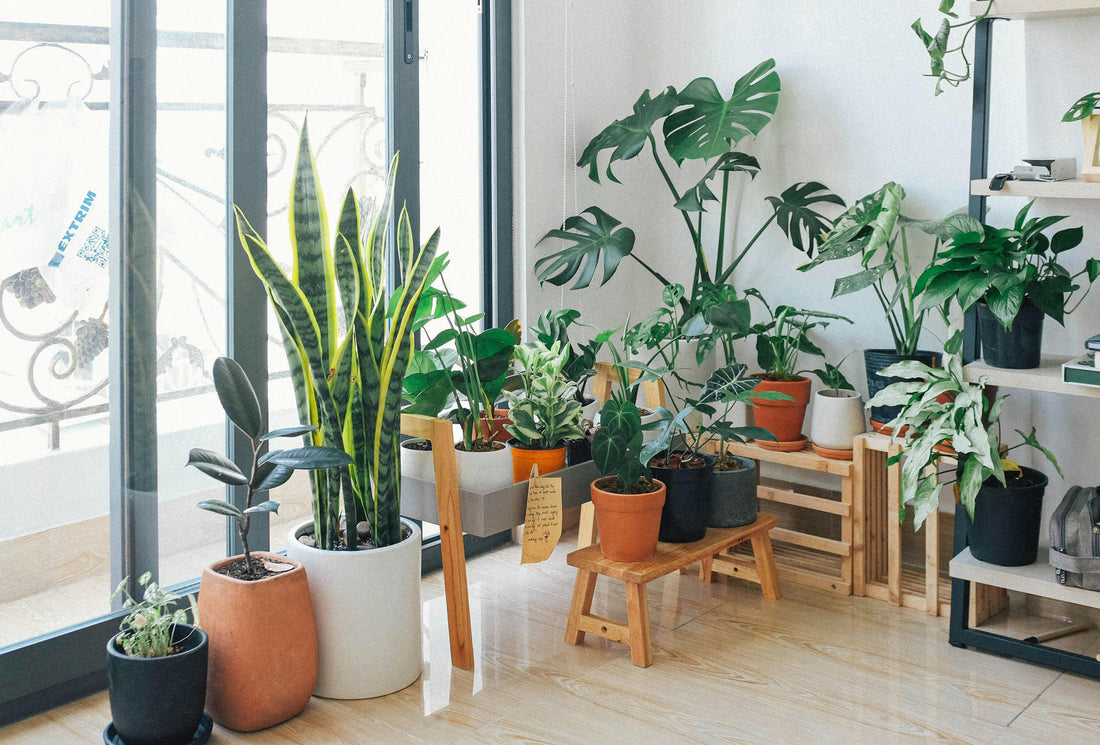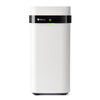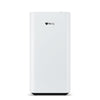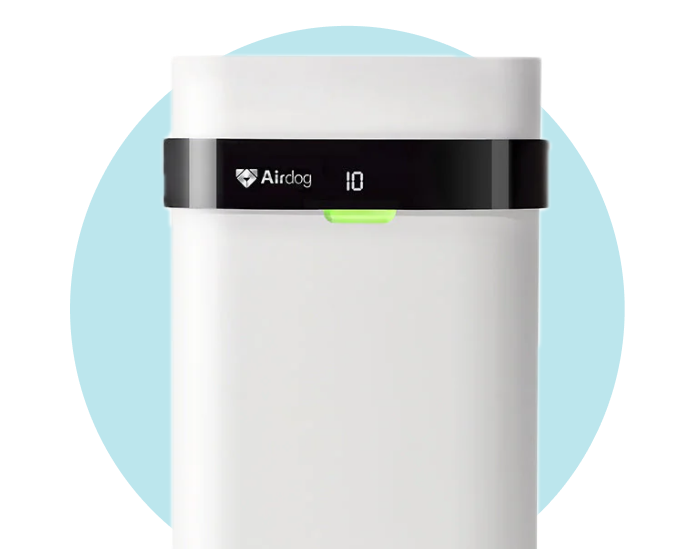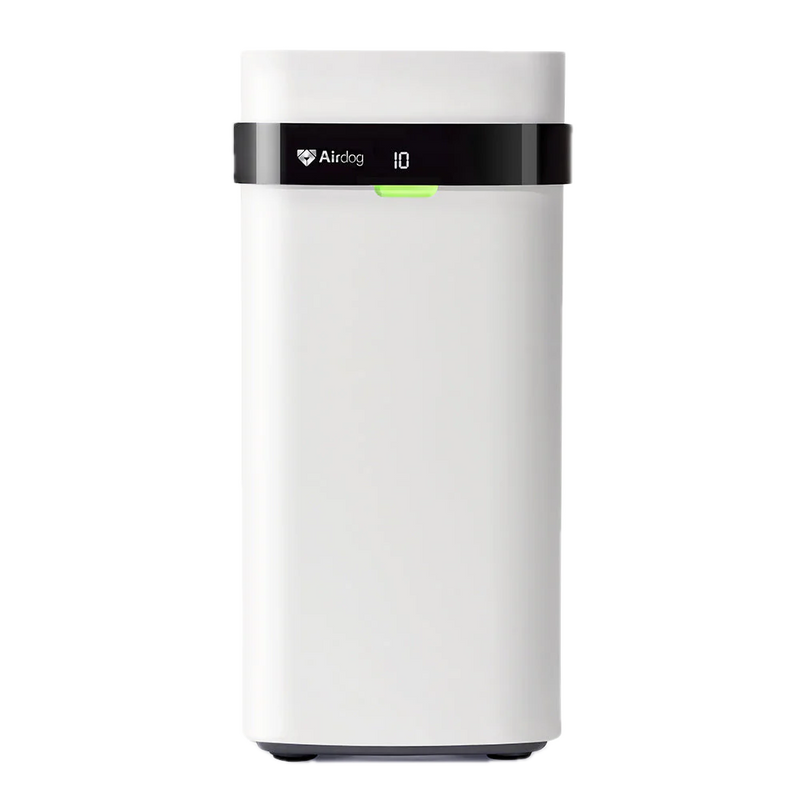Considering how much time we spend indoors, ensuring a healthy living environment is crucial. One of the most effective approaches is learning how to clean the air in your home naturally without relying on chemical-heavy products or conventional air purifiers.
This guide explores scientifically-backed, natural strategies to improve indoor air quality. From using air-purifying plants and enhancing ventilation to embracing natural cleaning products, you’ll discover practical ways to create a safer, fresher home while supporting a sustainable lifestyle.
Understanding Indoor Air Pollution
Indoor air pollution can silently affect your health. Modern homes, sealed tightly for energy efficiency, can trap pollutants, making natural air purification strategies even more important.
Common Sources of Indoor Air Pollution
-
Volatile Organic Compounds (VOCs): Emitted from paints, furniture, and cleaning products, VOCs can linger in the air long after use.
-
Allergens: Pet dander, fur, and dust mites accumulate in furnishings and bedding.
-
Mold and Mildew: High-humidity areas promote mold growth, which contaminates the air.
Health Implications
Poor indoor air can lead to:
-
Respiratory Issues: Asthma exacerbations, coughing, and shortness of breath can all stem from polluted indoor air.
-
Allergies: The presence of dust mites, pet dander, and mold spores can trigger allergic reactions and sinus issues.
-
Fatigue and Cognitive Concerns: VOCs and other pollutants can contribute to a general feeling of malaise, fatigue, and even cognitive decline over time.
Natural Air Purifying Plants
Plants are not only decorative—they are natural air cleaners. NASA research shows certain species effectively remove toxins like formaldehyde, benzene, and nitrogen oxides.
-
Spider Plant (Chlorophytum comosum): Celebrated for its resilience and minimal care requirements, the Spider Plant excels in removing formaldehyde and xylene.
-
Snake Plant (Sansevieria trifasciata): Known for its hardiness, the Snake Plant filters out formaldehyde, benzene, and nitrogen oxides, especially effective in bedroom environments as it releases oxygen at night.
-
Peace Lily (Spathiphyllum 'Mauna Loa'): Beyond its serene beauty, the Peace Lily is a powerhouse in eliminating ammonia, benzene, formaldehyde, and trichloroethylene.
The Science Behind Plant-Based Air Purification
The mechanism through which plants purify air extends beyond the simple process of photosynthesis. Here’s a closer look at the science:
-
Photosynthesis: Plants absorb carbon dioxide and, through photosynthesis, convert it into oxygen, thereby refreshing the air we breathe.
-
Microorganism Communities: The soil within potted plants hosts beneficial microorganisms. These communities play a crucial role in neutralizing pollutants, breaking them down into harmless substances.
Tips to Maximize Benefits:
To harness the full potential of these natural air purifiers, consider the following practical tips:
-
Optimal Placement: Place air-purifying plants in areas where you spend the most time, such as living rooms, bedrooms, and home offices, to maximize their beneficial effects. Ensuring one plant per 100 square feet can significantly enhance air quality.
-
Care and Maintenance: While these plants are low maintenance, regular watering (according to each plant’s needs), adequate sunlight, and periodic dusting of leaves are essential to keep them healthy and effective at air purification.
-
Avoid Overwatering: Overwatering can lead to mold growth in the soil, counteracting the air-purifying benefits. Ensure pots have proper drainage and allow the soil to dry between waterings.
Embracing these natural allies not only contributes to a healthier indoor environment but also adds a touch of green elegance to your home. By integrating air-purifying plants into your living space, you embark on a greener, cleaner path, ensuring the air you breathe at home naturally supports your well-being.
Enhancing Ventilation and Reducing Humidity
Proper airflow and humidity control are key to naturally clean air.
Ventilation Tips:
-
Open Windows: Regularly opening windows, even for a short period daily, can drastically improve air exchange and reduce indoor pollutant levels.
-
Use Exhaust Fans: Installing and using exhaust fans, particularly in high-moisture areas like kitchens and bathrooms, helps expel stale air and moisture, minimizing the risk of mold growth.
-
Embrace Cross Ventilation: Arrange your home to allow for cross ventilation. Open windows across each other to enable a natural flow of air, enhancing air exchange and cooling.
Humidity Management
Humidity levels greatly influence indoor air quality. Here’s how to keep humidity in check:
-
Deploy Dehumidifiers: In areas prone to high humidity, use dehumidifiers to maintain a healthy indoor climate and prevent mold and mildew formation.
-
Incorporate Moisture-Absorbing Plants: Plants like Boston ferns and peace lilies naturally absorb moisture and can help maintain a balanced indoor humidity level.
-
Monitor Humidity Levels: Aim to keep indoor humidity between 30-50%. Use hygrometers to monitor levels and adjust your dehumidifying strategies accordingly.
Strategic Fan Placement
Effective fan placement can significantly enhance air circulation and quality:
-
Position Fans for Maximum Efficiency: Place fans near windows or doors to push stale air out and pull fresh air in, creating a continuous air flow.
-
Use Ceiling Fans: Ceiling fans set on a low setting can help circulate air within rooms, making air purification plants even more effective by spreading the purified air around.
DIY Natural Air Fresheners
Chemical-based air fresheners can contribute to indoor air pollution. Consider these natural alternatives:
-
Essential Oil Diffusers: Use diffusers with natural essential oils like lavender, eucalyptus, or peppermint to freshen the air without harmful chemicals.
-
Homemade Spray: Mix water with a few drops of your favorite essential oils in a spray bottle for an instant, chemical-free air freshener.
-
Baking Soda: Place bowls of baking soda in areas prone to odors. Baking soda naturally absorbs unpleasant smells, keeping your air fresher.
By implementing these strategies, you actively contribute to a healthier, more sustainable living environment. Enhanced ventilation and humidity control, coupled with natural air freshening solutions, pave the way toward a cleaner, more breathable home atmosphere.
Natural Cleaning Products and Practices
Conventional cleaning agents often emit VOCs that degrade indoor air. Embrace natural alternatives:
DIY Natural Cleaning Solutions
-
All-Purpose Cleaner: Combine 1 part water, 1 part white vinegar, and a few drops of essential oils for fragrance. This solution works wonders on most surfaces, from countertops to tiled floors.
-
Glass Cleaner: Mix 1/4 cup vinegar with 4 cups of water, and use a soft cloth to clean windows and mirrors streak-free.
-
Scrubbing Paste: Create a thick paste using baking soda and water for a powerful scrub that can tackle tough grime in sinks, bathtubs, and ovens.
-
Deodorizer: Lemon juice acts as a natural deodorizer. Use it to remove unpleasant smells from refrigerators or mix it with baking soda to freshen drains.
Steam Cleaning: Uses only water to sanitize surfaces, reducing chemical exposure.
Dusting and Vacuuming: Regular dusting and vacuuming with HEPA filters play a crucial role in maintaining indoor air quality. These practices minimize the presence of dust mites, pet dander, and other allergens that can circulate within the home.
Innovative Natural Air Purification Methods
In the journey toward a healthier home, exploring natural air purification methods uncovers some less conventional yet highly effective approaches. Beeswax candles, salt lamps, and bamboo charcoal stand out for their unique abilities to purify indoor air, combining functional benefits with a touch of nature’s elegance in your living space.
Beeswax Candles: Nature's Air Purifiers
Beeswax candles play a significant role in cleaning the air naturally. Unlike paraffin candles, which can release harmful toxins, beeswax candles offer an eco-friendly alternative.
-
Negative Ions Production: When lit, beeswax candles emit negative ions. These ions bind with pollutants such as dust, pollen, and toxins, causing them to fall from the air and settle where they can be cleaned away easily.
-
Natural Composition: Being a natural substance, beeswax candles burn cleaner and emit a natural, sweet scent without the need for added artificial fragrances.
-
Soothing Ambiance: Beyond air purification, the warm glow of beeswax candles creates a calming atmosphere, enhancing the overall well-being of occupants.
Salt Lamps: Hygroscopic Air Cleaners
Salt lamps, carved out of Himalayan salt, are not only visually appealing but also possess hygroscopic properties, making them effective in purifying indoor air.
-
Attracting Moisture: Salt lamps naturally attract moisture from the air. This moisture, which can carry indoor air pollutants, adheres to the lamp's surface.
-
Evaporation Process: As the lamp warms up from the bulb inside, it evaporates the captured water back into the air but retains the trapped pollutants, thus cleansing the air.
-
Ion Generation: Similar to beeswax candles, salt lamps are believed to generate negative ions, contributing further to air purification and enhancing mood.
Bamboo Charcoal: The Natural Deodorizer
Bamboo charcoal, known for its porous structure, serves as an effective, natural way to purify home environments by absorbing moisture and odors.
-
High Absorptivity: The porous nature of bamboo charcoal allows it to absorb excess moisture effectively, which helps in controlling humidity levels and preventing mold growth.
-
Odor Elimination: Bamboo charcoal traps and neutralizes odors from pets, cooking, and garbage, keeping the home environment fresh without the use of chemical deodorizers.
-
Long-term Use: Unlike conventional air fresheners that require frequent replacement, bamboo charcoal can be "recharged" by placing it in sunlight, making it a sustainable and cost-effective solution for natural air purification.
Whether it's the soothing ambiance of beeswax candles, the unique air-cleansing properties of salt lamps, or the moisture-absorbing capabilities of bamboo charcoal, these natural solutions offer effective ways to enhance indoor air quality. As we continue to seek out eco-friendly alternatives, these methods stand as a testament to the power of natural solutions in creating cleaner, healthier living spaces.
Breathing Easy: Putting Natural Air Purification into Practice
Learning how to clean the air in your home naturally means combining simple, effective strategies to reduce pollutants and improve indoor air quality. Air-purifying plants, proper ventilation, natural cleaning products, and methods like beeswax candles, salt lamps, and bamboo charcoal all play a role in creating a healthier living space.
For even more consistent results, pairing these natural approaches with a high-performance Airdog air purifier ensures fine particles, allergens, and airborne pollutants are captured efficiently. This combination of nature and technology makes it easy to maintain fresh, safe air throughout your home.
By combining nature-based approaches with trusted technology like Airdog, you can confidently maintain a healthy indoor environment — making every breath at home both refreshing and safe.


